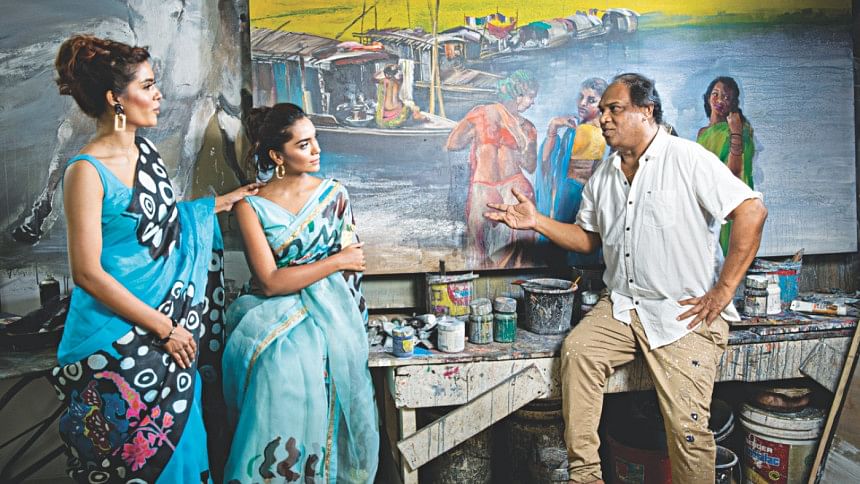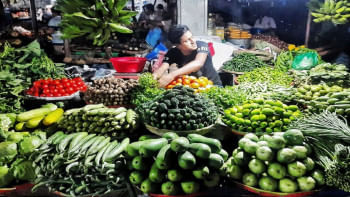One fine day at Jamal Ahmed’s

Recognised for his unflinching approach to art, Jamal Uddin Ahmed is revered for his projections into realism, with detailed paintings on the stray life of the gypsies, their longing pain, amusements and yearning, this mere mortal of a man, has almost reached the pinnacle of his creative skill.
Also famous for his series on pigeons, horses and the mystic minstrels of Bangladesh, he received the Ekushey Padak in 2019, the second highest civilian award in Bangladesh, for his prised contribution to fine arts.
Just imagine the excitement when we got the opportunity to meet the artist in his very studio, one fine day for an exclusive rendezvous!
How was the beginning? Any struggles whatsoever?
I am very lucky on this regard because my parents were very supportive of my choice of career and they just let me be.
How does it feel to be associated with the second highest civilian award?
Of course, I feel very honoured. But to be frank, I didn't recognise the depth of the value before I received the award. Now, everyone seems to know me just by that, and it's amazing. I hope to do great work in the future to keep up with the expectations.
In your work history, we see a lot of specific themes — any inclination towards a particular series of work?
It actually depends on how I am inspired at the moment. My pigeon series got to me very suddenly. Few years back, while I was staying in New York, there were a few pigeons that flew into a balcony and I happened to watch their body movements in slow motion. At that very moment, I realised there was so much art in that entire process and I immediately decided to capture it. Interestingly, it became very famous over the years, as my patrons also appreciated the form and the associated romanticism. With the horses, I am captivated by their strength, beauty and majestic outlay, and so, I focus on them, even though horses are not a common phenomenon in these parts of Asia.
Most of your objects are larger than life; even the women in your paintings? Any reason behind that?
I portray the women in my paintings as I see them. The ladies in our region are beautiful and well-proportioned, and that is exactly how I try to project them...just as they are. In most of my paintings, these women are carrying water from the wells, displaced in their thoughts, multitasking with field work while taking care of their children. These are the real women of our country, the hard working women and I try to make their emotions come into life along with images. To me, human beings are the most important aspects of nature.
What would you compare your paintings to?
To me, paintings are similar to music compositions; there is a unique flow to them. And new techniques appear as one works on a piece. That is exactly how the drench technique was revealed to me. Once I had left my work next to an open window, and when I came back, I was simply amazed with the results. Nature, namely rain and wind, had swept over the canvas and improvised it, giving it a bespoke washed-out look. From then onwards, whenever I need a similar look, I spill water and tilt my canvas at a certain angle.
Is there anything you would like to say to the fine arts enthusiasts?
Every painting must portray some emotion. If paintings are devoid of emotions, they can never be great paintings — they'd just be regular ones. To achieve greatness, one must be able to capture the emotions in its truest form.
This is something I had learned from my gurus and I thank them every day for it.
Photo: Sazzad Ibne Sayed
Model: Mysha, Tania
Styling: Sonia Yeasmin Isha
Wardrobe: Kuhu Plamondon
Makeup: Farzana Shakil's Makeover Salon
Location: Jamal Ahmed's Studio

 For all latest news, follow The Daily Star's Google News channel.
For all latest news, follow The Daily Star's Google News channel. 



Comments